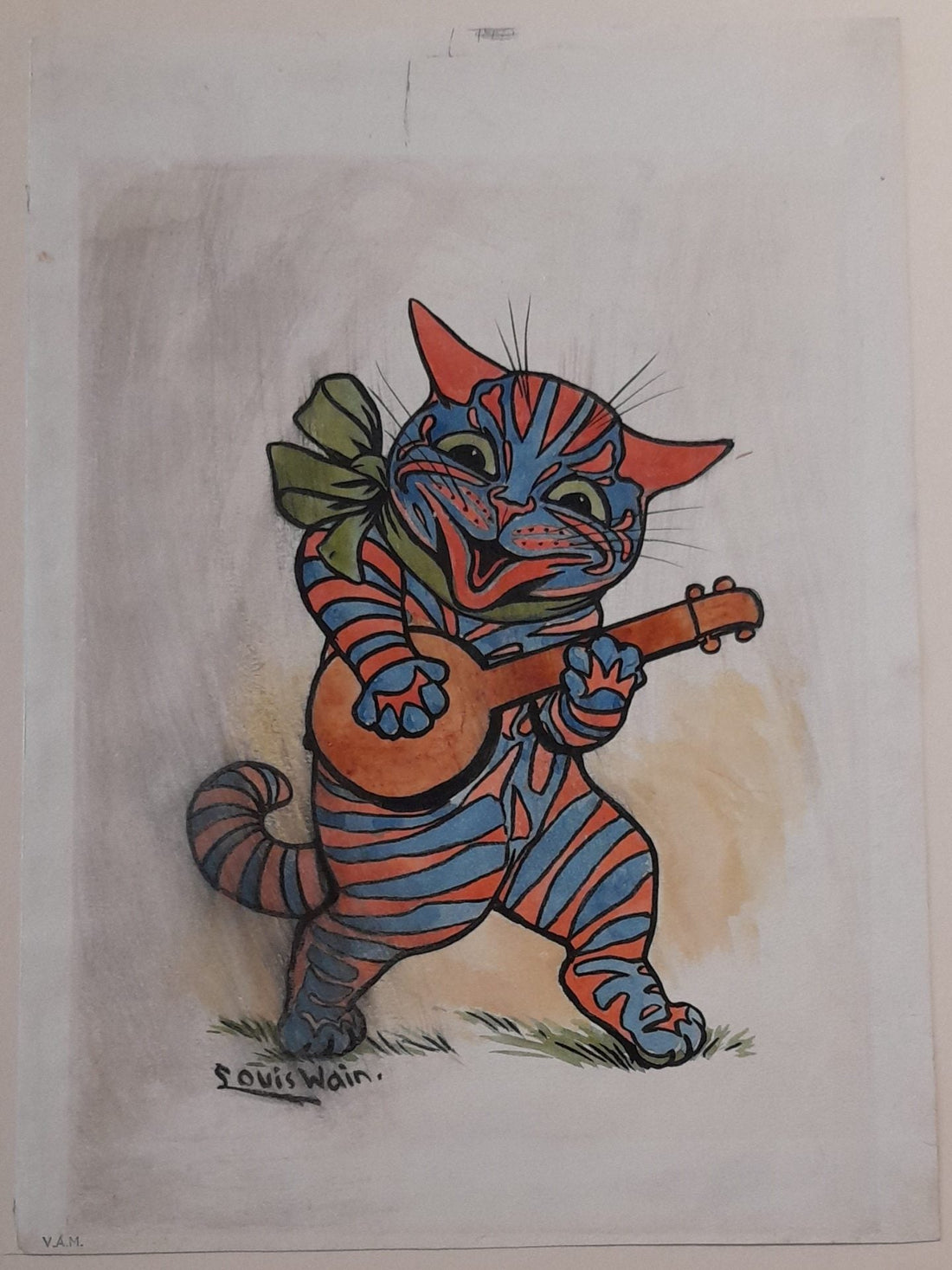
A World Through Whiskers: The Enduring Love of Louis Wain and His Cats
Share
A World Through Whiskers: The Enduring Love of Louis Wain and His Cats
In the whimsical and often surreal art world, few figures are as inextricably linked to a single subject as Louis Wain is to cats. His name conjures images of wide-eyed felines, sometimes mischievous, sometimes melancholic, often dressed in human attire and engaging in decidedly human activities. But beyond the charming eccentricity of his artwork lies a profound and lifelong love affair between an artist and his furry companions.
Born in Victorian London in 1860, Louis Wain initially pursued a career as a freelance artist, contributing illustrations to various periodicals. It wasn't until the late 1880s that cats truly began to dominate his artistic output. This shift was largely inspired by his beloved pet cat, Peter.
Peter, a stray black and white cat Wain rescued, became more than just a pet; he was a muse, a confidant, and a source of immense comfort, particularly during a difficult period when Wain's wife, Emily Richardson, was battling cancer. Peter's playful antics and expressive features captivated Wain, and he began to sketch him incessantly. These early drawings, often realistic portrayals of Peter in various poses, marked the beginning of Wain's lifelong feline fascination.
As Wain's popularity grew, so too did the anthropomorphism in his cat illustrations. He began depicting them attending tea parties, playing musical instruments, going to the theatre, and even participating in sporting events. These weren't just whimsical drawings; they offered a satirical commentary on Victorian society, with cats often mirroring human foibles and social customs. His work brought joy and amusement to a public eager for lighthearted entertainment.
Wain's cats were more than just cute caricatures; they possessed a remarkable range of emotions. From the gleeful expressions of cats celebrating a birthday to the wistful gazes of solitary felines, Wain imbued his subjects with a depth of feeling that resonated with viewers. He saw the individual personalities in each cat, a testament to his keen observation and genuine affection for them.
Tragically, in his later years, Louis Wain suffered from mental illness, believed by some to be schizophrenia. Interestingly, even as his mental state declined, cats remained a central theme in his art, albeit in increasingly abstract and kaleidoscopic forms. Some art historians have controversially interpreted these later works as a visual representation of his deteriorating mental state, with fragmented bodies and vibrant, swirling patterns. However, others argue that even in their abstraction, these pieces still convey a powerful, albeit altered, fascination with feline forms and colors.
Despite the challenges he faced later in life, Louis Wain's legacy as "the man who drew cats" endures. His whimsical and imaginative portrayals not only captured the hearts of the Victorian public but continue to delight audiences today. He helped to elevate the status of cats in popular culture, transforming them from mere household pets to beloved companions with distinct personalities.
Louis Wain's story is a poignant reminder of the powerful bond between humans and animals. His unwavering love for cats fueled his artistic creativity and left behind a unique and charming body of work. Through his art, he invited us to see the world, at least in part, through the expressive and enigmatic eyes of a cat, a perspective that continues to enchant and amuse us more than a century later. His art is a testament to the enduring magic that unfolds when genuine affection meets artistic vision, creating a world forever infused with whiskers, tails, and the undeniable charm of our feline friends.
